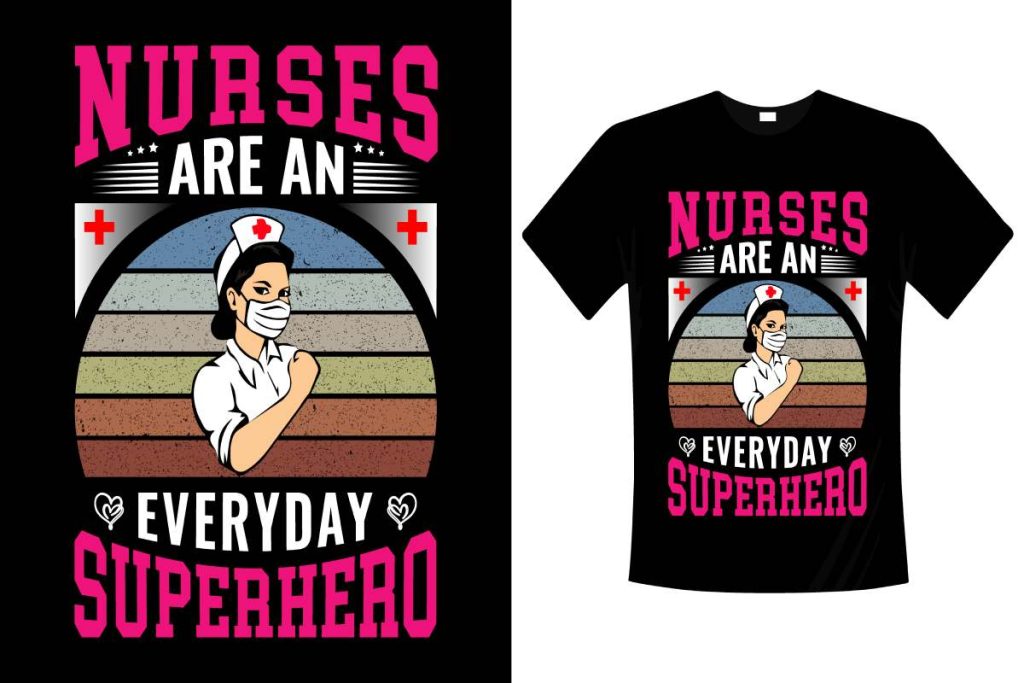DTF Transfers, or Direct to Film transfers, have emerged as a revolutionary technique in the world of textile printing, making it easier than ever to create vibrant and intricate designs. As this innovative printing method gains popularity, many enthusiasts are keen to learn essential tips for mastering DTF transfers to achieve stunning results on various fabrics. By combining quality materials with effective heat press techniques and proper color management for DTF, you can ensure that your prints are not only aesthetically pleasing but also durable and long-lasting. In this comprehensive guide, we will delve into the best practices and expert recommendations that will elevate your DTF printing skills to new heights. Whether you’re a seasoned printer or just starting, this resource will provide valuable insights tailored to help you reap the benefits of DTF printing.
Direct to Film transfers, a cutting-edge method in the field of custom printing, enables creators to transfer stunning designs onto textiles effortlessly. This technique is rapidly changing the landscape of fabric decoration by offering unparalleled versatility and superior print quality. Many practitioners are eager to refine their skills with essential DTF transfer tips, ensuring that every print turns out as envisioned. By mastering a variety of printing techniques and optimizing heat press procedures, artists and designers alike can produce vibrant, durable prints that stand out in the marketplace. Understanding the intricacies of color management for DTF is equally important, as it allows for accurate color reproduction, enhancing the overall quality of the finished product.
Understanding the DTF Transfer Process
The DTF transfer process is an innovative printing technique that has transformed the way we approach textile design. By utilizing specialized inks and films, designers can print vibrant, detailed graphics onto a film, which is later transferred onto fabric using a heat press. This technique not only allows for intricate designs but also provides excellent durability and washability, making it a popular choice for custom apparel and merchandise. Understanding the steps involved in this process is crucial for anyone looking to achieve the best results.
One of the key aspects of the DTF transfer process is the choice of materials, including the film and the inks used. High-quality DTF films are essential for ensuring the print adheres properly to the substrate and remains vibrant over time. Furthermore, selecting the right fabric is equally important, as materials such as cotton and polyester offer better adhesion and results. By mastering these elements, printers can enhance their products’ overall quality and performance.
Essential DTF Transfer Tips for Quality Results
When it comes to DTF transfers, several tips can help elevate the quality of your prints. First, maintaining precise printer settings is imperative. Always use the highest resolution available and incorporate ICC profiles tailored specifically for DTF printing. This step ensures accurate color representation and crisp detail, leading to stunning print outcomes. Additionally, using premium DTF inks can significantly enhance vibrancy, ensuring your designs pop against various fabric backgrounds.
Moreover, applying the right amount of adhesive powder during the transfer stages can help achieve an even and durable bond between the ink and the fabric. This meticulous approach, when combined with proper heat press techniques, such as temperature control and post-press cooling, can make a substantial difference in print longevity and appearance. By consistently applying these best practices, you can turn out professional-grade garments that stand the test of time.
Heat Press Techniques for DTF Transfers
Heat press techniques play a pivotal role in the success of DTF transfers. Proper temperature and pressure settings are key to achieving the desired results. Typically, a heat press should be set between 320°F to 350°F, although the ideal setting may vary depending on the fabric type and ink used. Timing is also crucial; the transfer usually requires about 10-15 seconds, ensuring the ink adheres properly to the fabric. Adjusting these variables can help optimize the transfer process for different materials.
In addition to temperature and time management, understanding the significance of post-press cooling is vital. Allowing the fabric to cool momentarily before removing the film can solidify the bond between the print and substrate. This step minimizes the risk of peeling or fading, ensuring a high-quality finish. By mastering these heat press techniques, you can enhance your DTF prints’ durability and appearance, making your creations stand out.
Addressing Common DTF Transfer Challenges
Despite the advantages of DTF transfers, several challenges may arise during the printing process. One common issue is the mismatch of colors between the design on screen and the final print. To avoid this, it’s essential to maintain accurate color profiles and calibrate your monitor to match the intended output. Conducting test prints on the chosen fabric can also help in fine-tuning colors before commencing large runs, ensuring consistency across prints.
Another frequent problem encountered is adhesive bonding issues. Ensuring the transfer film and fabric are clean and properly prepped can greatly influence the outcome. Experimentation with different press times and temperatures is encouraged to find the optimal conditions for your specific adhesive and fabric combination. Keeping a detailed log of settings and outcomes can serve as a valuable reference for overcoming future challenges, leading to more successful projects.
The Importance of Color Management for DTF Printing
Color management is crucial for achieving stunning DTF prints that accurately reflect the designer’s vision. Utilizing ICC profiles specifically designed for DTF transfers can help manage color reproduction effectively, ensuring that the prints pop and maintain their vibrancy after multiple washes. This practice not only improves color accuracy but also enhances the overall quality of the prints, making them more appealing to customers.
Furthermore, calibrating your printer and monitor is vital in achieving consistent results. By ensuring that your hardware is properly adjusted, you can prevent many common issues related to color discrepancies. It’s advisable to perform regular color calibration checks and create a set of standard settings that can be replicated for future projects. By prioritizing color management in your DTF printing process, you can significantly elevate the quality of your prints and achieve professional results.
Expanding Knowledge Through Resources and Networking
In the dynamic world of DTF transfers, continuous learning is essential. Engaging with online communities, attending workshops, and utilizing educational resources can help printers stay abreast of the latest advancements in printing technologies and techniques. Numerous forums and social media groups focus on DTF printing, where enthusiasts share their challenges, successes, and tips for improving their craft. Networking with other printers can provide inspiration and innovative solutions to common challenges.
Additionally, visual learning can complement written resources effectively. Watching tutorial videos and detailed guides can help demystify complex processes, offering practical insights that enhance understanding. By expanding your knowledge base through various resources and establishing connections within the DTF community, you can refine your skills and stay competitive in the ever-evolving landscape of DTF printing.
Frequently Asked Questions
What are DTF transfers and how do they work?
DTF transfers, or Direct to Film transfers, involve printing designs onto a special film using DTF inks. The printed film is then transferred onto fabric using heat and pressure, allowing for intricate designs and vibrant colors suitable for various textiles.
What materials should I choose for successful DTF transfers?
Selecting high-quality DTF film and appropriate textiles is crucial for successful DTF transfers. Use compatible transfer films for your printer and pre-treated fabrics like cotton or polyester to achieve optimal print quality and adhesion.
How can I manage colors effectively in DTF printing?
To ensure accurate colors in DTF printing, utilize ICC profiles designed for DTF transfers. Proper color management is essential to achieve vibrant prints that truly represent your digital designs on fabric.
What are essential heat press techniques for DTF transfers?
For effective DTF transfers, use a heat press set to 320°F to 350°F and press for 10-15 seconds, depending on the fabric type and ink used. After pressing, allow the fabric to cool briefly before peeling off the film to secure the design’s adhesion.
What common challenges might I face during DTF transfers and how can I solve them?
Common challenges with DTF transfers include color matching issues and adhesive bonding problems. To address this, calibrate your monitor, conduct test prints to fine-tune settings, and ensure proper cleaning and preparation of surfaces before pressing.
How important are the quality of inks and adhesives in DTF printing?
Quality of inks and adhesives is vital for DTF printing success. Premium DTF inks enhance print vibrancy and durability, while proper adhesive powder application ensures strong bonding between the design and fabric, preventing peeling and fading over time.
| Key Points | Details |
|---|---|
| What are DTF Transfers? | DTF transfers involve printing designs onto a special film with DTF inks, then transferring them to fabric using heat. They provide vibrant, intricate designs that work on various textiles. |
| Choose the Right Materials | Select high-quality DTF film and ensure proper fabric selection; cotton and polyester yield better results. |
| Maintain Printer Settings | Set the printer to the highest quality; use ICC profiles for color accuracy. |
| Proper Inks and Adhesives | Use premium DTF inks and apply hot melt adhesive powder immediately after printing. |
| Heat Press Techniques | Set the heat press to 320°F-350°F with 10-15 seconds timing; cool before peeling off the film. |
| Conduct Tests and Adjust Settings | Run test prints and document successful settings for future reference. |
| Additional Best Practices | Stay updated with new techniques, invest in tutorials, and network with other DTF enthusiasts. |
| Common Challenges and Solutions | Address color matching issues, adhesive bonding problems, and print durability by testing and adjusting settings. |
Summary
DTF Transfers have become pivotal in modern printing, enabling creators to produce vibrant, high-quality designs. Mastering the nuances of DTF transfers is essential for achieving consistent, stunning prints on various textile materials. By employing high-quality materials, maintaining precise printer settings, and utilizing effective heat press techniques, anyone can enhance their printing capabilities. Constant testing and engaging with the DTF community not only improve results but also keep you informed about the latest trends and techniques in this evolving field. Dive into the world of DTF transfers and unlock your potential for creativity and quality in textile printing.



